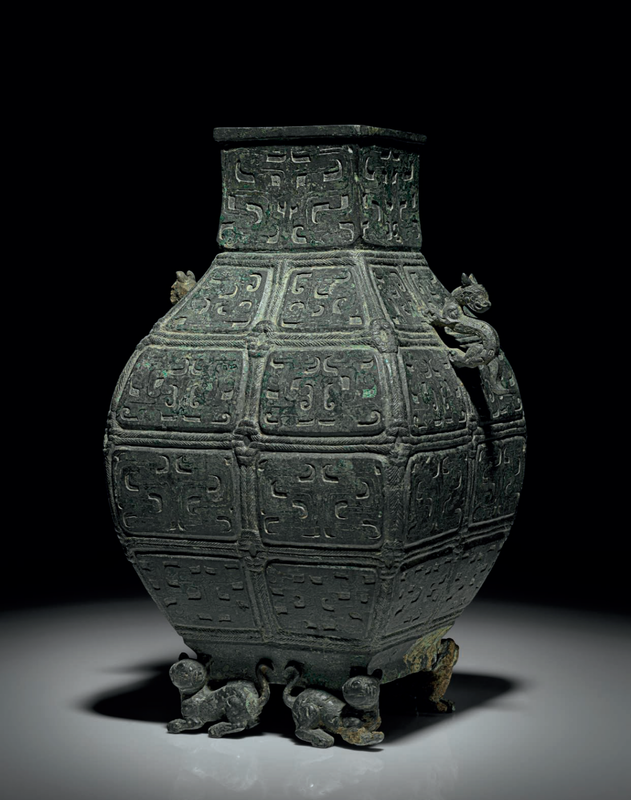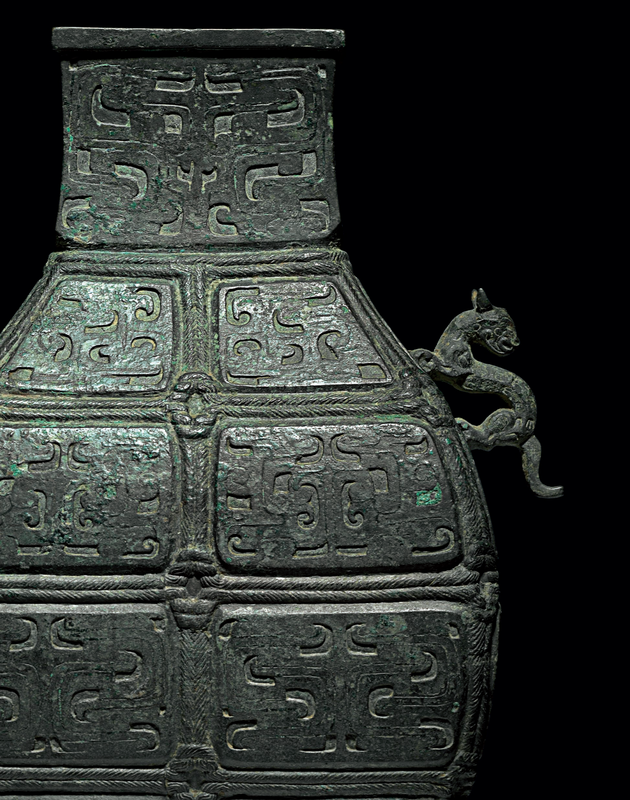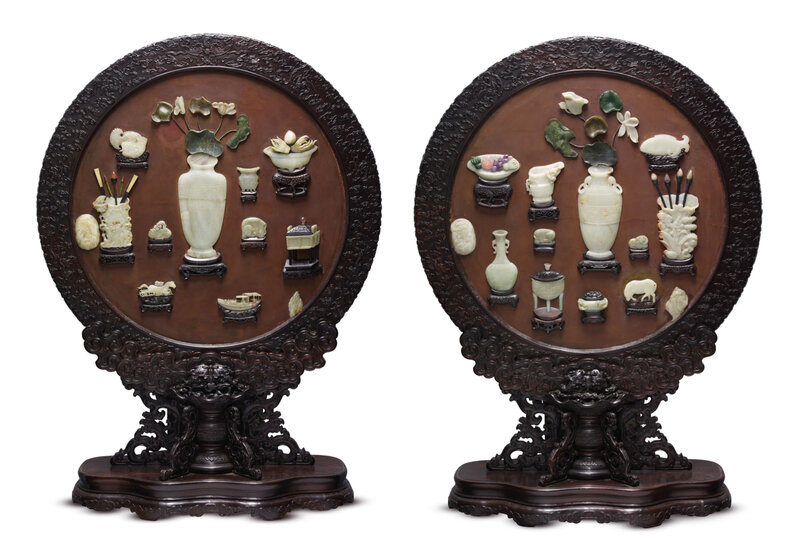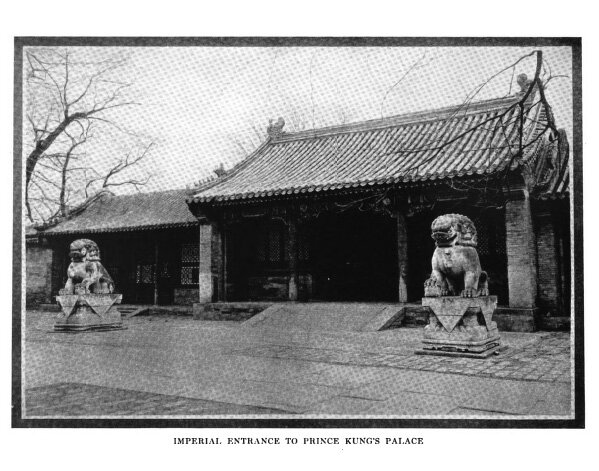A rare bronze ritual faceted wine vessel, fanghu, early Warring States period, 5th century BC
Lot 1115. A rare bronze ritual faceted wine vessel, fanghu, early Warring States period, 5th century BC; 14 in. (35.6 cm.) high. Estimate USD 50,000 - USD 80,000. Price realised USD 125,000. © Christie's Images Ltd 2018.
The fanghu is raised on four tiger-form supports and is flanked by a pair of tiger-form handles. It is decorated with rectangular panels of scrolls divided by rope-twist bands.
The present fanghu as illustrated in the sale catalogue, The Remarkable Collection of the Imperial Prince Kung of China, The American Art Galleries, New York, 27-28 March 1913, lot 316.
Note: Works from the Prince Kung Collection have always exuded prestige, from the first 1913 sale when the top buyers of the day thronged the sale room to, more recently, when a pair of jade embellished zitan screens sold at Christie’s Hong Kong, 1 December 2010, lot 3008.
Formely in the Prince Kung (sixth son of Emperor Daoguang, r. 1821-1850) by descent to his grandson. A magnificent massive pair of jade embellished zitan moon-shaped screens, Qianlong period (1736-1795); 57 1/8 in. (145 cm.) overall height. Sold for 32,020,000 HKD at Christie’s Hong Kong, 1 December 2010, lot 3008. © Christie's Images Ltd 2010.
Prince Kung was a hereditary title first bestowed to Aisin Gioro Yixin (1833-1898), who was the sixth son of the Daoguang Emperor, as well as one of the most influential statesmen in the late Qing dynasty. Directly involved in instigating the Xinyou Coup in 1861, he was appointed Prince-Regent afterwards. He was compelled to sign the Convention of Peking, which set the scene for an era later known as the ‘Tongzhi Restoration’. Personally urging the Qing Empire to reform its foreign diplomacy, he launched the Self-Strengthening Movement, but was criticized by the conservative Qing-liu school and ridiculed as ‘Devil Number Six’ (for Prince Kung was the sixth son of the Daoguang Emperor). His contention for the throne against his half-brother Yizhu (who became the Xianfeng Emperor) was a tale which fascinated people, who have painstakingly combed both the official Qing archive and apocryphal accounts for riveting details of palace intrigue.
1872: Prince Gong seated in his mansion garden, at about 40 years of age. Source: John Thompson, Illustrations of China and It’s People, Vol.1, Plate I, London, 1873 (Public Domain)
In 1851, Yixin was given an extensive mansion by the Xianfeng Emperor. This 18th century mansion, which is now a museum, became known as the most sumptuous in Beijing and was luxuriously furnished in the Qing style, with jades and bronzes primarily housed in the great library. He was frequently invited by his brother, Emperor Xianfeng, to visit the Palace so that they could view art and antiques together, and Prince Kung became known as one of the most informed antique experts among the imperial princes. The treasures from the Prince Kung collection evoke the lost splendors of the Qing period: the preface to the 1913 sale catalogue speaks eloquently of their home in the Prince Kung mansion: ‘In a place like this one might spend weeks in perfect contentment, enjoying nature and the great art collection’.
Source: Google Books (Public Domain)
Pu Wei (1880-1936), also known as Xiao Gongwang (Prince Kung, Junior), was the grandson of Yixin (1833-1898) and inherited the imperial title of Prince Kung in 1898, as well as his grandfather’s mansion in Beijing. A year after the Qing dynasty was overthrown in 1911, Pu Wei made the painful decision to sell the family treasures in this mansion in order to raise funds for a military reinstatement of the Qing dynasty, and entrusted them to the Japanese antique dealer Yamanaka Sadajiro. He wrote in his diary on 17th January 1912: ‘There will be severe regrets for this decision. A sacrifice of the family has to be made in order to extricate a troubled country. In this view, a dealer must be found for the antiques to be turned into funds’. The 1913 sale of the collection in New York featured 536 lots, and on 5-6 March in the same year a further 211 lots from Prince Kung’s Collection were offered in London.
Christie's. Fine Chinese Ceramics and Works of Art, New York, 13 - 14 September 2018

/https%3A%2F%2Fprofilepics.canalblog.com%2Fprofilepics%2F1%2F0%2F100183.jpg)
/https%3A%2F%2Fstorage.canalblog.com%2F03%2F02%2F119589%2F96711876_o.jpg)
/https%3A%2F%2Fstorage.canalblog.com%2F11%2F31%2F119589%2F94773502_o.jpg)
/https%3A%2F%2Fstorage.canalblog.com%2F20%2F83%2F119589%2F94772815_o.jpg)
/https%3A%2F%2Fstorage.canalblog.com%2F26%2F72%2F119589%2F75604929_o.jpg)
/https%3A%2F%2Fstorage.canalblog.com%2F59%2F60%2F119589%2F26458628_o.jpg)









/image%2F1371349%2F20240406%2Fob_b23648_434058570-1644317966338216-88086167391.jpg)
/image%2F1371349%2F20240403%2Fob_6d5ae7_dp-28103-001.jpg)
/image%2F1371349%2F20240229%2Fob_8f31f9_431013694-1625286614908018-33034430839.jpg)
/http%3A%2F%2Fstorage.canalblog.com%2F79%2F20%2F119589%2F129837997_o.jpg)